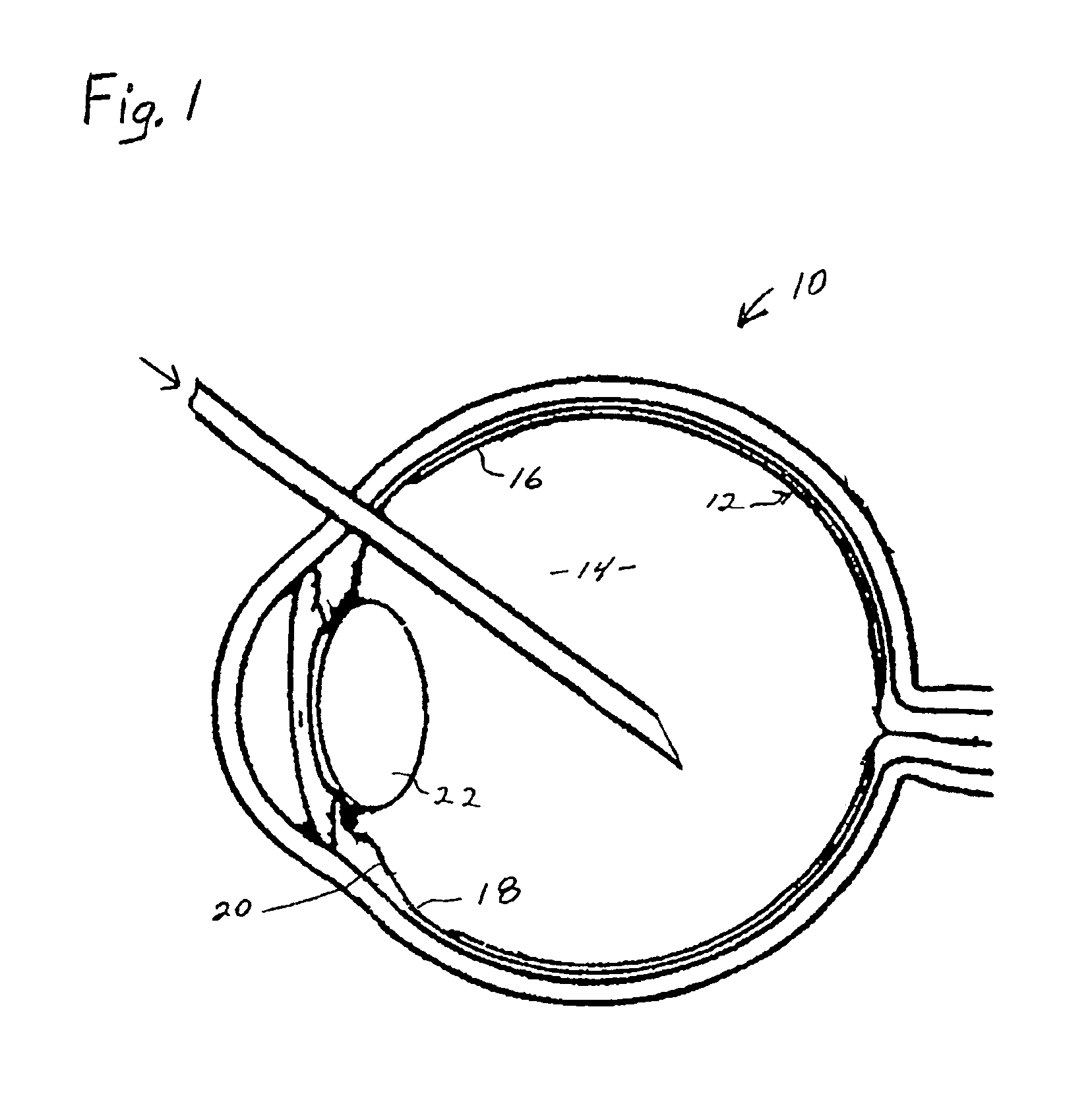Process for generating plasmin in the vitreous of the eye and inducing separation of the posterior hyaloid from the retina
a technology of vitreous and plasmin, which is applied in the direction of drug compositions, peptide/protein ingredients, cardiovascular disorders, etc., can solve the problems of retinal break formation or bleeding from retinal blood vessels, retinal tear formation or bleeding from traction on retinal blood vessels, etc., to inhibit retinal tears
- Summary
- Abstract
- Description
- Claims
- Application Information
AI Technical Summary
Benefits of technology
Problems solved by technology
Method used
Image
Examples
example 1
[0082]In this Example, the concentration of plasmin was determined in various test samples. All enzyme assays were performed at 25° C. in 0.05 M Tris-HCl buffer (pH 7.4, containing 0.038 M NaCl and 0.01% Tween 80) or in lysine-phosphate buffer (pH 7.5, 0.1 M phosphate buffer, 0.07 M lysine) in a total volume of 1 ml. Chromogenic plasmin substrate S-2251 (H-D-Val-Leu-Lys-pNA≅2 HCl, DiaPharma, Columbus, Ohio) at a final concentration of 0.6 mM was used to measure plasmin generation. Absorbance was monitored continuously at 405 nm using the UV-1601spectrophotometer (Shimadzu Scientific Instruments, Inc., Columbia, Md.) over a period of 5 minutes. All measurements were performed in duplicate and the mean values were used as the test result.
[0083]The ability of S-2251 to be cleaved to a colored product was tested using purified human plasmin (Sigma-Aldrich, St. Louis, Mo.). The activities of r-UK and r-lys-plg were separately tested with purified human plasminogen (Sigma-Aldrich) and hum...
example 2
[0099]This example evaluates the safety of the compounds in the vitreous and determines the toxicity levels in the eye. Twenty eyes of 20 rabbits were used to determine the safety and toxicity of r-lys-plg and r-UK. Animals were randomly divided into 10 groups (Table 2); 2 rabbits in each group were injected with varying concentrations of r-lys-plg (10 μg / 0.1 ml to 6 mg / 0.1 ml) in the right eyes and 0.1 ml of balanced salt solution (BSS) in the left eyes. Ten rabbits were randomly divided into 5 groups depending on the concentration of r-UK (Table 2). Two animals in each group were injected with varying concentrations of r-UK (10 to 200 IU / 0.1 ml) in the right eyes and 0.1 ml of BSS in the left eyes.
[0100]At concentrations up to 10 μg of r-lys-plg, no toxicity finding was observed upon clinical examination, ERG, and histopathology. A slight haze in the posterior vitreous was observed in all eyes at the 24-hour examination. The haze resolved over the following days without any compli...
example 3
[0106]This example measures the efficacy of the compounds in the formation of posterior vitreous detachment. The test data are reproduced in Table 1.
[0107]Twenty-two animals were divided into eight groups (2-4 rabbits per group). The right eye of each rabbit was injected with either BSS (Groups 1, 5), r-lys-plg (Groups 2, 6), r-UK (Groups 3, 7), or 75 μg r-lys-plg and r-UK (Groups 4, 8). Two hours after the first set of injections, 0.4 ml of 100% SF6 was injected in half of the eyes that previously received the injection of BSS (Group 5), r-lys-plg (Group 6), r-UK (Group 7), and a combination of r-lys-plg and r-UK (Group 8). SF6 injection was performed under direct visualization with an indirect ophthalmoscope through a 30-gauge needle. The lower pars plana was used for gas injection and the animal's head was kept in a vertical position following injection to prevent gas escape from the injection site. Anterior chamber paracentesis was performed before gas injection to prevent acute...
PUM
| Property | Measurement | Unit |
|---|---|---|
| concentration | aaaaa | aaaaa |
| concentration | aaaaa | aaaaa |
| concentration | aaaaa | aaaaa |
Abstract
Description
Claims
Application Information
 Login to View More
Login to View More - R&D
- Intellectual Property
- Life Sciences
- Materials
- Tech Scout
- Unparalleled Data Quality
- Higher Quality Content
- 60% Fewer Hallucinations
Browse by: Latest US Patents, China's latest patents, Technical Efficacy Thesaurus, Application Domain, Technology Topic, Popular Technical Reports.
© 2025 PatSnap. All rights reserved.Legal|Privacy policy|Modern Slavery Act Transparency Statement|Sitemap|About US| Contact US: help@patsnap.com

